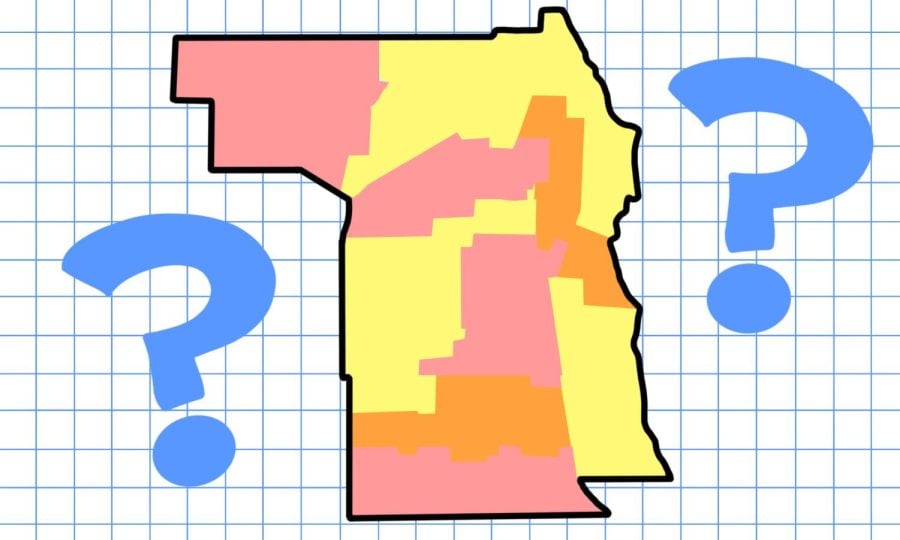Redistricting Committee discusses 6th and 7th Wards at Tuesday meeting
File illustration by Olivia Abeyta
Evanston’s Redistricting Committee started soliciting feedback on how to change the city’s ward lines in May. It plans to submit potential maps to City Council after April’s municipal election.
October 26, 2022
Evanston’s Redistricting Committee discussed adjusting boundaries of 6th and 7th wards Tuesday.
Joined by about 10 community members, the committee considered ways to downsize both wards, which have populations greater than the average ward population in Evanston.
Some residents, including Tina Paden, suggested shifting 5th Ward lines into the 6th and 7th wards. The 5th Ward has a smaller population compared to the city average.
Other proposed changes included redrawing the 6th and 7th Wards to run east to west. Ald. Eleanor Revelle (7th) also proposed moving all or part of Northwestern’s campus to the 1st Ward, which houses a lower-than-average population.
City Council determined in May it will redistrict the city to account for population imbalances. The 3rd Ward’s population is 11.7% greater than average population in each ward, and the 9th Ward’s is 8.7% less, according to 2020 Census data.
The resulting 20.4% population deviation between wards exceeds the 16.4% maximum deviation required by federal guidelines. The rule is intended to preserve the “one-person, one vote” principle — with more consistent populations across the wards, each resident’s vote holds equal power.
Not all residents agree with City Council.
“We do not need redistricting,” resident Priscilla Giles said at the meeting. “Wards should reflect neighborhoods, not politics.”
No specific population deviation percentage will automatically address the “one-person, one-vote” inconsistency on the ward map, Pritzker Prof. Michael Kang told The Daily.
The city also has some leeway when trying to redraw these districts with more equal populations, he added.
“Based on case law, states and localities have a 10% safe harbor where the maximum deviation can fall within without getting struck down,” Kang said.
The Redistricting Committee will hold three more ward-specific meetings to gather community input through January. Committee Chair and Ald. Jonathan Nieuwsma (4th) said the committee will present new ward maps to the Council after the April 2023 local elections at the earliest. The committee won’t begin drawing new maps until it finishes hearing community input from every ward.
The committee will also try to adjust current boundaries as little as possible and keep communities of interest together, following criteria from the 2003 redistricting process in Evanston.
Committee members also discussed preserving three districts whose population consists mostly of racial minorities at the Aug. 23 meeting. Kang said these wards exist so minority votes aren’t split across wards and effectively diluted.
The committee will also consider maximizing the number of wards that represent downtown Evanston in order to maintain the city’s traditional neighborhoods and minimize voter confusion.
The map will not take effect until 2025 elections, in accordance with state law.
The next meeting, which covers the 8th and 9th Wards, will be held 7 p.m. on Nov. 22, and community members can attend in-person at the Morton Civic Center or virtually.
Email: williamtong2026@u.northwestern.edu
Twitter: @william2tong
Related Stories:
— Evanston Redistricting Committee discusses need for community engagement in planning meeting
— Seven candidates speak at forum to fill Evanston’s vacant 2nd Ward seat



